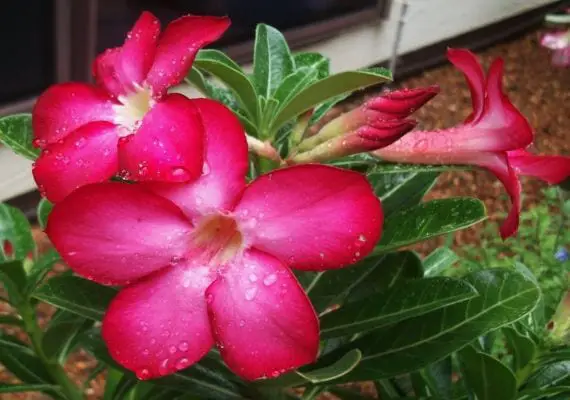
The Desert rosewhose scientific name is Adenium Obesum it is a small shrub no more than five meters high. Its origin is in East Africa and southern Arabia.
It is very common to find it in collections of cactus and succulent plants for its flowers, which have a high ornamental value.
It is a plant that has a very large, caudiciform, tuberous stem. Its leaves are oval, semi-persistent, dark green, with a very marked main vein.
Its growth is very slow, maybe 50cm in ten years.
The flowers, which can be of various colors (pink, red, white, bicolor …) appear solitary or in bouquets, and measure about 10cm in diameter.
It is suitable for growing indoors and for the Bonsai technique.
Its maintenance is simple, but we must bear in mind that it does not resist frost. The care you need are:
- Location: full sun. Tolerates semi-shadow.
- Irrigation: it depends on the climate we have. In general once a week in summer, and the rest of the year every fortnight. If we overdo the waterings, the stem will rot. The Desert Rose does not tolerate waterlogging.
- Substrate: draining. We can use a commercial mixture for cacti and succulent plants, or we can mix black peat and a draining material (perlite or vermiculite) at 50%.
- Subscription: once a week or every fifteen days from March to October.
- In frosty climates, store indoors or in a greenhouse at a temperature equal to or greater than ten degrees.
In winter, if it loses the leaves, it is normal. The plant goes into rest, it is its way of hibernating. We will space the irrigations to one per month.
The desert rose can be attacked by aphids and mealybugs, which must be eradicated with specific products.
It is not necessary to transplant it often. If at the time of purchase we transplant it into a pot a little larger than the one it had, the new pot will serve you for several years.
Image – Frangipini Gardens
More information – Cultivation of cacti and other succulents

